When harnessed by proper mounting of the turbine vibrator, this rotary vibration is transferred through the hopper or bin wall to the material within. As the material vibrates it is displaced from the hopper wall reducing friction and allowing gravity to restore material flow. Proper mounting also disperses the rotary vibration over a large area producing uniform material flow. Since rotary vibration is directional, material will be encouraged to flow in the direction of the rotating turbine wheel.
Turboviber® vibrators operate at relatively high RPM producing high frequency vibration. They also produce large amounts of force. This makes them well suited for compacting or unloading large quantities of fine materials, such as sand or cement, from railcars, batch hoppers, or storage bins. Excellent for use with wet fine material. The high frequency excites the fine particles and the high force moves the large mass
These same properties make Turboviber® vibrators highly useful for consolidating concrete. It takes this unique combination of frequency and force to remove air bubbles, disperse the large aggregates, and ensure the cement fines are evenly distributed to coat the aggregates. Proper use of vibration means less water is needed, which produces stronger concrete. Air bubble removal and even cement-aggregate distribution produces a smoother finish. Turboviber® vibrators make pouring concrete quicker and easier without harming the forms. They are commonly found on battery molds, compaction tables, tilt tables, and a large variety of forms and molds for girders, tees, columns, culverts, vaults, containers, septic tanks, concrete pipe, etc.
It is easy to tune Turboviber® vibrators to the material being handled. When the frequency of the vibration matches the natural frequency of the material, enhanced flow can be achieved with a minimum of force. This can be achieved by simply increasing the speed gradually (increasing the air flow) until material flow is achieved. This way you obtain the maximum result with the minimum of air consumption and vibrator wear. Once the material moves freely, the vibrator can be turned off until it is needed again.
Features:
• Produces Uniform, Directional Flow.
• High Frequency, High Amplitude Vibration.
• Versatile - Easy to control force and frequency by adjusting air supply.
• Reliable Starting - No vanes to stick.
• Simple, Dependable - No vanes to stick, therefore starts every time regardless of mounting position.
• Easy Maintenance & Repair - No vanes or cylinders
• One-Year Warranty
Operating Requirements:
• Filtered air. No lubrication required.
• 70-110 PSI. 30-90 CFM.
Specifications
Frequency at 20 PSI (1.4 BAR) |
N/A 9,000 rpm |
Air Flow at 20 PSI (1.4 BAR) |
N/A <10 cfm |
Force at 20 PSI (1.4 BAR) |
N/A 1,688 lbs |
Frequency at 40 PSI (2.8 BAR) |
N/A 11,000 rpm |
Air Flow at 40 PSI (2.8 BAR) |
N/A 30 cfm |
Force at 40 PSI (2.8 BAR) |
N/A 2,521 lbs |
Frequency at 60 PSI (4.1 BAR) |
N/A 13,000 rpm |
Air Flow at 60 PSI (4.1 BAR) |
N/A 40 cfm |
Force at 60 PSI (4.1 BAR) |
N/A 3,521 lbs |
Frequency at 80 PSI (5.5 BAR) |
N/A 14,000 rpm |
Air Flow at 80 PSI (5.5 BAR) |
N/A 50 cfm |
Force at 80 PSI (5.5 BAR) |
N/A 4,084 lbs |
Weight lbs. |
N/A 17.9 |
(A) Inch |
N/A 9.3 |
(B) Inch |
N/A 8.6 |
(C) Inch |
N/A 7.4 |
(D) Inch |
N/A Fits standard cradle lug bracket |
(E) Inch |
N/A Fits standard cradle lug bracket |
(F) Inch |
N/A 1/2 NPT |
(G) Inch |
N/A 1/2 NPT- 2 PORTS |
Manufacturer |
N/A Global Manufacturing |

